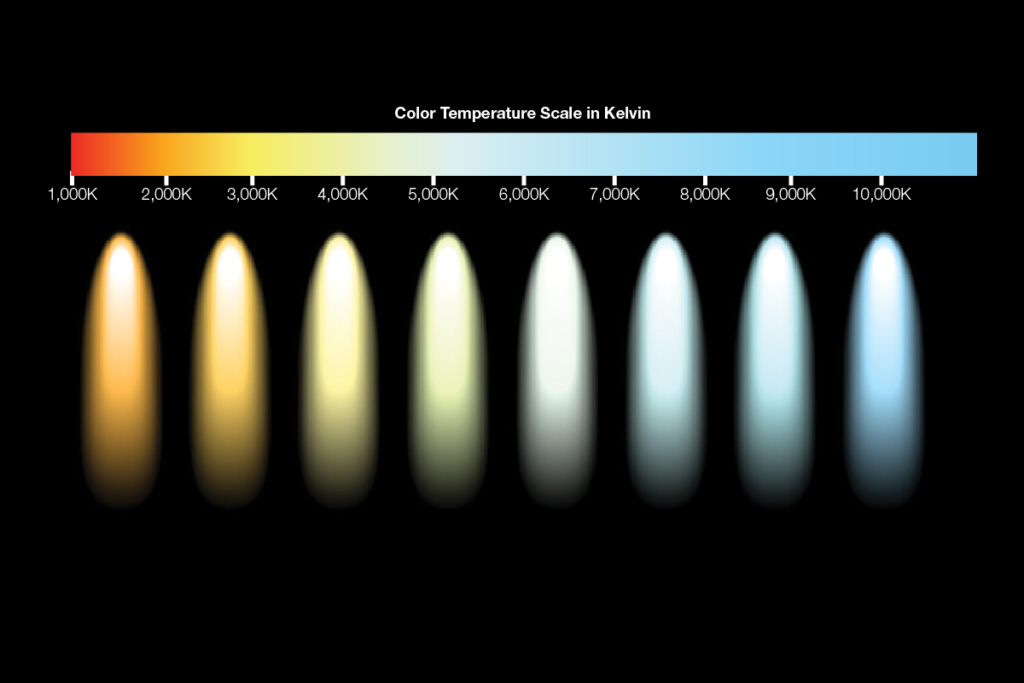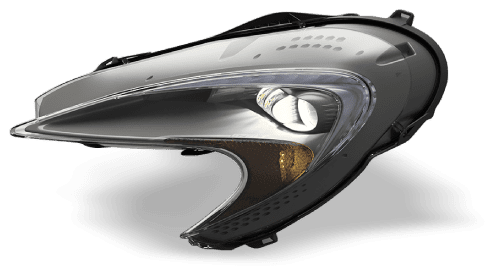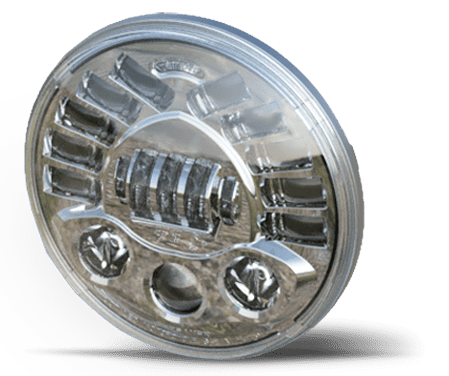
What's a CRI Score and Why It's Important for Lighting Color Quality
Color Quality of Light

Most of us think of color in very absolute terms – a strawberry is red, a banana is yellow, or the sky is blue. In reality, the color we perceive is relative to the type of light that falls upon an object. Under white light, a strawberry appears red because it reflects wavelengths in the red portion of the spectrum of light and absorbs the rest. If you were to filter out the red wavelengths from a light source, the strawberry would appear dark green or black. This demonstrates that the perceived color of an object can change based on the color makeup of the light illuminating it.
The same strawberry looks vastly different under different lighting conditions (daylight on the left, light where the red wavelengths have been filtered out on the left.
Measuring Color
There are two common metrics used to describe the color properties of a light source: correlated color temperature (CCT), which describes the color appearance of the light itself (warmer or cooler-looking color), and color rendering index (CRI), which suggests how an object, illuminated by that light, will appear in relation to its appearance under other common light sources.
Both CCT and CRI can be valuable in evaluating and specifying light sources, but it is important to understand that they are not the same. Lights with the same CCT can have completely different CRI values.
The correlated color temperature (CCT) of a light source is a numerical measurement of its color appearance. This is based on the principle that any object will emit light if it is heated to a high enough temperature, and the color of that light will shift in a predictable manner as the temperature is increased.
The system is based on the color changes of a theoretical “blackbody radiator” as it is heated from a cold black to a white-hot state. With increased temperature, the blackbody would shift gradually from red to orange to yellow to white and, finally, to a blue white. A light source’s CCT, then, is the temperature, measured and expressed in degrees Kelvin (K), at which the color of the blackbody would exactly match the color of the light source.
The CRI is a system derived from visual experiments which assess the impact of different light sources on the perceived color of objects. First, the CCT of the light source being rated is determined. Next, each of eight standard color samples are illuminated – first by the light source and then by a light from a blackbody matched to the same CCT. If none of the samples change in color appearance, the light source is given a CRI rating of 100 (CRI is measured on a scale of 0 to 100 percent). Any changes in color appearance which do occur result in a lower rating. The CRI decreases as the average change in the color appearance of the eight samples increases. The higher the CRI value, the better the light’s ability to render individual colors.
The Kelvin Scale is used to measure CCT. While it may be counter-intuitive, the lower the color temperature, the “warmer” the light appears (ex. reddish is in the 1,000 range).
CRI Light—When Color Really Matters
While most people do not normally consider CCT or CRI light in their daily lives, these two things can have a tremendous impact upon our effectiveness in certain applications. Consider the ability of a search and rescue team to locate a missing person in the wilderness, or the staff of an autobody shop giving your car a new paint job. In both of those cases (and many more), it is important for people to perceive small differences in color. In both cases, high CCT and CRI lighting would significantly improve their ability to get the job done.
This approximates the eight standard color samples that are used to determine CRI score.
J.W. Speaker—the Best of Both Worlds
Want More Information on CRI Light?
Please call us at 1-800-558-7288 or send us an e-mail at speaker@jwspeaker.com and our experienced staff will be happy to answer any questions that you may have regarding CRI light.
About J.W. Speaker
J.W. Speaker is focused on developing innovative, high-performance vehicular lighting solutions for OEM and aftermarket customers around the world. Specialized in LED and other emerging lighting technologies, J.W. Speaker is proud to design, manufacture and assemble products in Germantown, Wisc. For more information, contact J.W. Speaker at (800) 558-7288 or news@jwspeaker.com.


